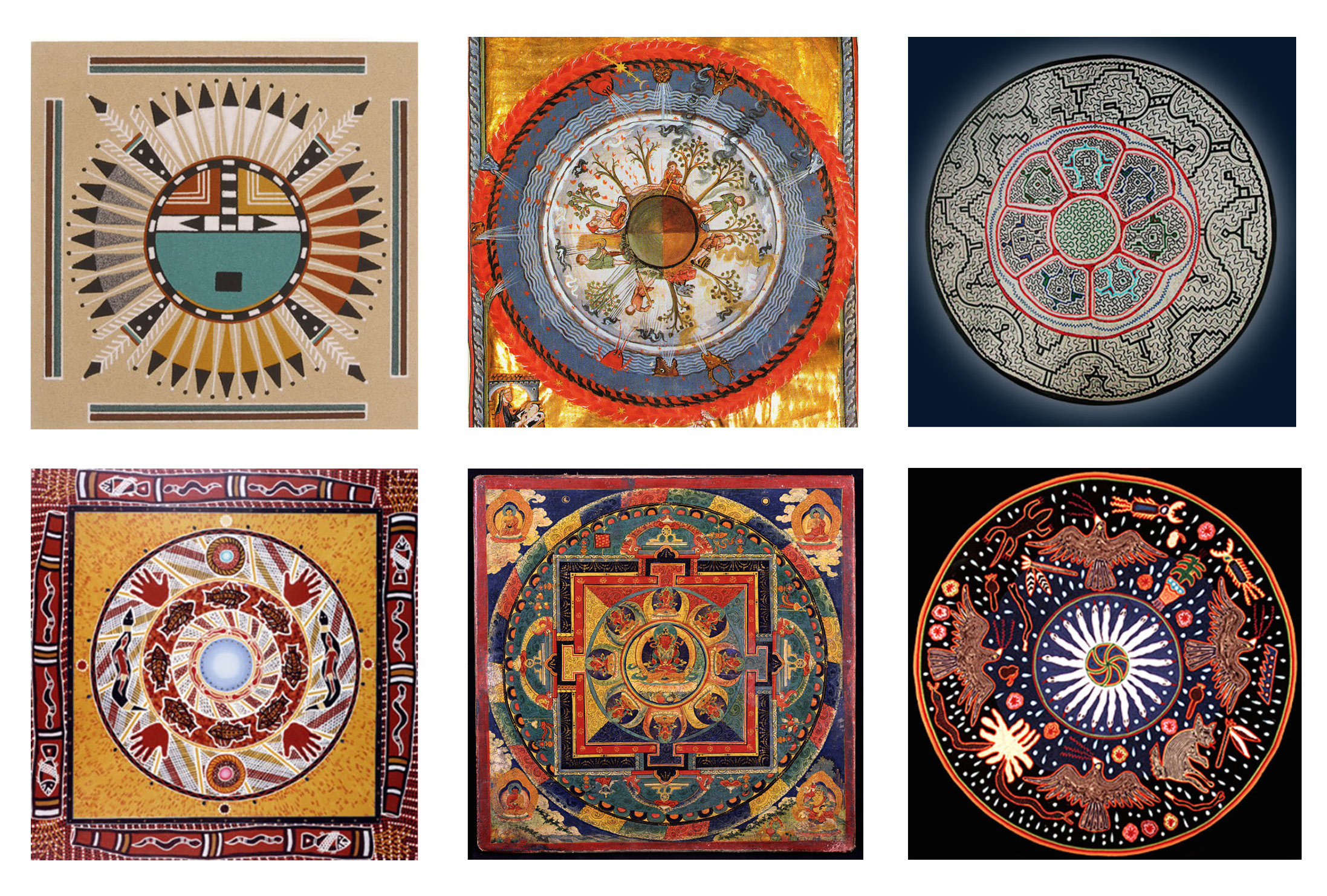
NEURAL MANDALAS: BRIDGING THE GAP BETWEEN THE COSMOS AND THE GEOMETRIC BRAIN
Illustrating the order of the universe through a series of concentric forms, the mandala is used as a ritual meditative symbol in conjunction with its function as an art form, meant to guide the viewer into a process of cosmic integration and eventual self-healing. Though this symbol originated in the Buddhist tradition, the circle form has been found in a variety of cultures across the globe. From drug-induced hallucinations of modern South American shamans to the meditative visions of medieval Christian abbesses, the mandala's ubiquitous presence suggests that it did not arise from Buddhist influence alone. The pervasive nature of this type of representational image across peoples and across time has evoked much curiosity among theologians, philosophers, and artists alike, but many of the surveys on mandala forms have been restricted to the Eastern tradition. Mandala studies gained popularity in Western culture with the writings of 20th century psychologist Carl Jung, who analyzed the therapeutic symbolic form in the context of his greater theory of the mythical collective unconscious.
My goal with this project is to recall Jung's original inquiry into the nature of the symbol's ubiquity, stripping away his focus on mystical symbolism and instead directing my attention to the skeleton of the mandala itself: the circle. I am suggesting that the commonalities that arise in the drawings of such different cultural traditions are determined primarily by a common neural connection in the human brain’s disposition towards geometry. This tendency displays itself most clearly in the form of geometric hallucinations known as form constants, phenomenal experiences that arise as a result of abnormal sensory states. Using mathematical models as well as psychophysical experimental data as explanation for these hallucinations, I am proposing that this geometric neural network is what accounts for the ubiquity of the circular motif in the mandala form. This motif naturally displays itself as individuals enter into meditative or drug-induced states when channeling the cosmos, thus adding a physical backbone to a mystical process.
SECTOR A: Philosophy & Science of Seeing
Advisers: Gary Hatfield (PHIL) | Jackie Tileston (FNAR)

 Visual Studies
Visual Studies